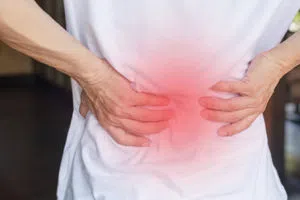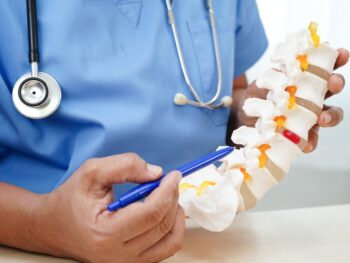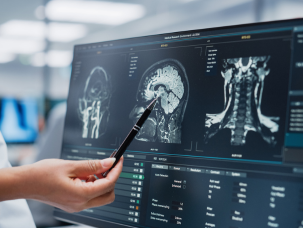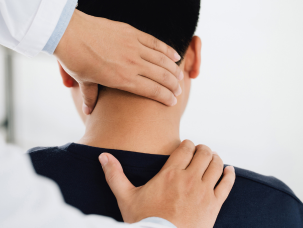Low back pain can really be a pain in the—well, back.
This condition is one of the most common health issues around. In fact, 31 million Americans experience low back pain at any given time, and it is the single leading cause of disability worldwide. In many cases, low back pain can resolve itself over a period of time. However, should the pain last longer than three months, it is then considered a chronic condition.

When chronic low back pain strikes, it can be due to any number of reasons. Let’s take a look at some of the top causes of chronic low back pain:
Disc herniation occurs when the soft center of a spinal disc (the cushion between two vertebrae) leaks through a crack in the tough exterior and places pressure on the surrounding nerve or nerve roots, resulting in pain. Herniated discs can happen in the cervical (neck) or lumbar (low back) sections of the spine.
2. Facet joint dysfunction.
Facet joints are joints that are located behind the majority of the spinal discs. They help give the spine its flexibility and stabilize it. When these joints become inflamed, they can cause pain similar to that of a herniated disc.
3. Spinal stenosis.
Spinal stenosis is a narrowing of the spinal canal where the spinal cord and nerves live. The narrowing can put pressure on the nerves, causing pain. Like disc herniation, this typically only occurs in the cervical or lumbar spine.
4. Sacroiliac joint dysfunction.
The sacroiliac joints connect the bottom of the spine (sacrum) to the pelvic bone. They are strong, weight-bearing, low-motion joints that act as shock absorbers between the upper and lower body. These joints can cause pain if they become inflamed or if there is too little or too much motion in the joint(s).
A compression fracture is the result of smaller fractures in the vertebra to collapse. Compression fractures are usually due to the bones becoming weak and soft due to natural wear-and-tear over time, osteoporosis or other issues such as cancer (e.g., lymphoma, multiple myeloma) or trauma. The collapsed vertebra can cause sudden pain in the back.
6. Spondylolisthesis.
Spondylolisthesis is a condition where one vertebra slips over the other one, causing them to overlap. Pain resulting from this disorder can be due to an instability of the spine or nerve compression.
A spinal cord tumor is a mass that grows in the spinal column or inside the skull. As it grows, is presses on nearby nerves, resulting in pain.
8. Osteoarthritis (OA).
OA is a disease that affects the joints of the body. It occurs when the cartilage between the joints deteriorates over time, resulting in swelling, inflammation and pain. When OA affects the spine, it’s also known as spondylosis.
9. Trauma.
Trauma to the back following an incident such as a fall or motor vehicle accident can also cause pain. Patients who experience back pain immediately after such an incident should be medically evaluated as soon as possible.
10. Spinal irregularities.
Certain deformities of the spine, such as scoliosis or kyphosis, can cause pain if left untreated.
11. Other less common causes.
Chronic low back pain can also be due to more unlikely culprits, which can include infection—also known as osteomyelitis— and certain autoimmune diseases (e.g., fibromyalgia, rheumatoid arthritis, lupus).
No matter the cause, chronic low back pain can impair everyday activity and keep you from doing the things you enjoy. If you’re living with chronic back pain, schedule an appointment with one of our specialists today to find relief.



